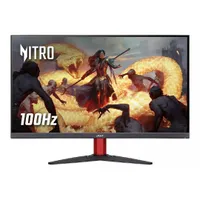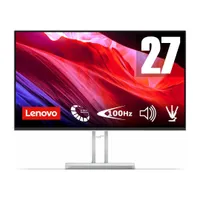Best gaming monitors in 2025: Top picks for PC, PS5 and Xbox
Find the best way to game with one of the best gaming monitors around
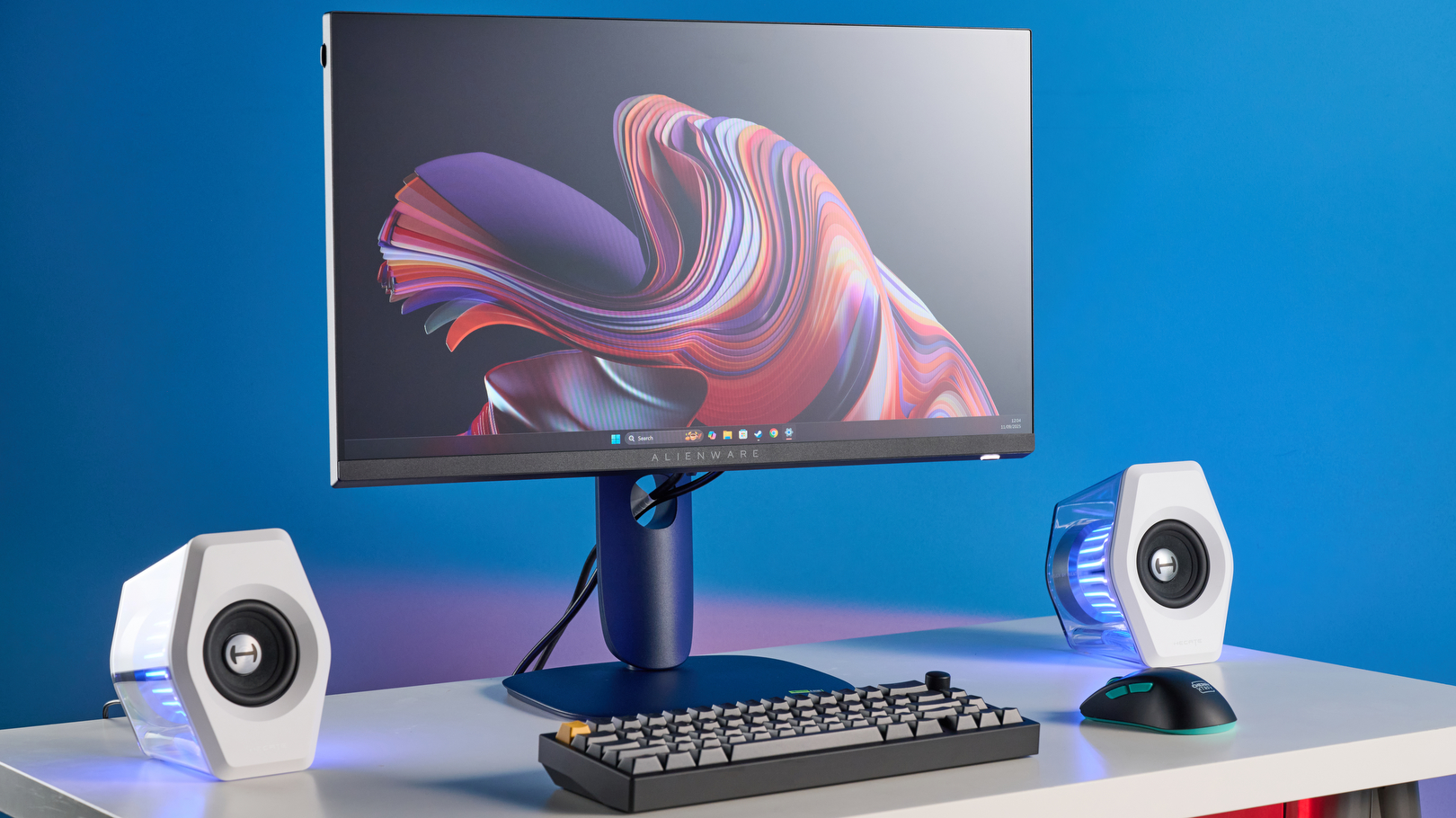
Since I cover all things computing for Tom's Guide, I'm always on the hunt for the best gaming monitors that can make my favorite games shine on my PC or console. After all, what's the point of having a powerful rig if it can't be displayed in all of its glory?
So, if you're looking for vibrant, color-rich details and blazing fast refresh rates going well beyond 120Hz while kicking back and playing the latest titles on your PC, PS5 or Xbox, you're not alone. My team of monitor experts and I test dozens of screens with hours of gameplay, pinning down a wide range of gaming monitors that will shine in your gaming setup.
For the ultimate gaming experience, it's hard to go wrong with the LG UltraGear 45GR75DC. If you've got the space, this 45-inch monster with a curved display will show off games at their finest, and at a 200Hz refresh rate. But for those on a budget, I'd point you towards the $249 Alienware AW2525HM with a whopping 320Hz refresh rate.
Give your games (and yourself) the visual treatment they deserve with these best monitors for your PC or consoles. Your eyes will thank you later.
My favorite gaming monitors right now
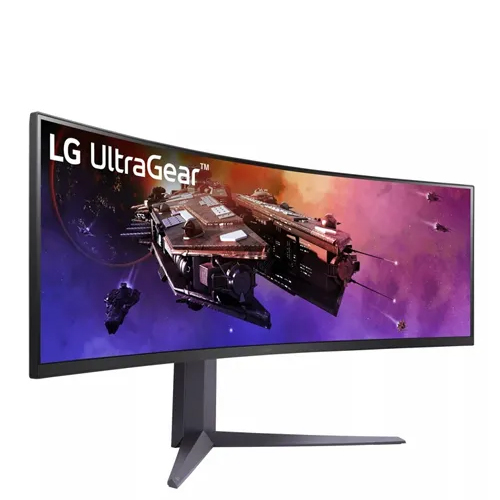
A big and brilliant gaming monitor that boasts super-speedy, performance, sharp and vivid 3.5K resolution and 1500R curvature that really draws you in. This is the ultimate display for both playing games and working on.
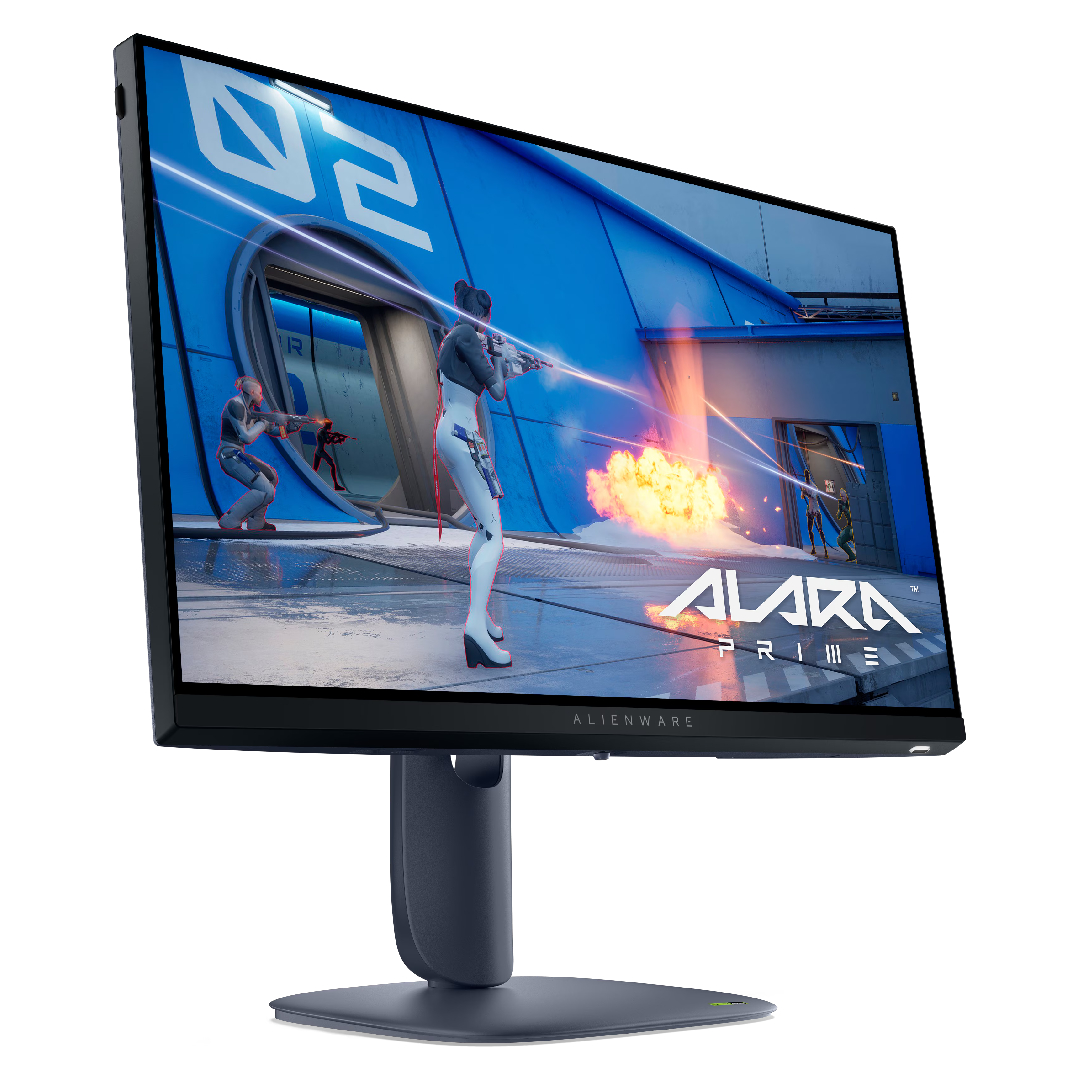
It's amazing what this Alienware AW2525HM offers for just $249, especially for those competitive gamers out there. With a whopping 320Hz refresh rate, 0.5ms response time and amazing color accuracy, this 1080p screen will fit in with any gaming setup.
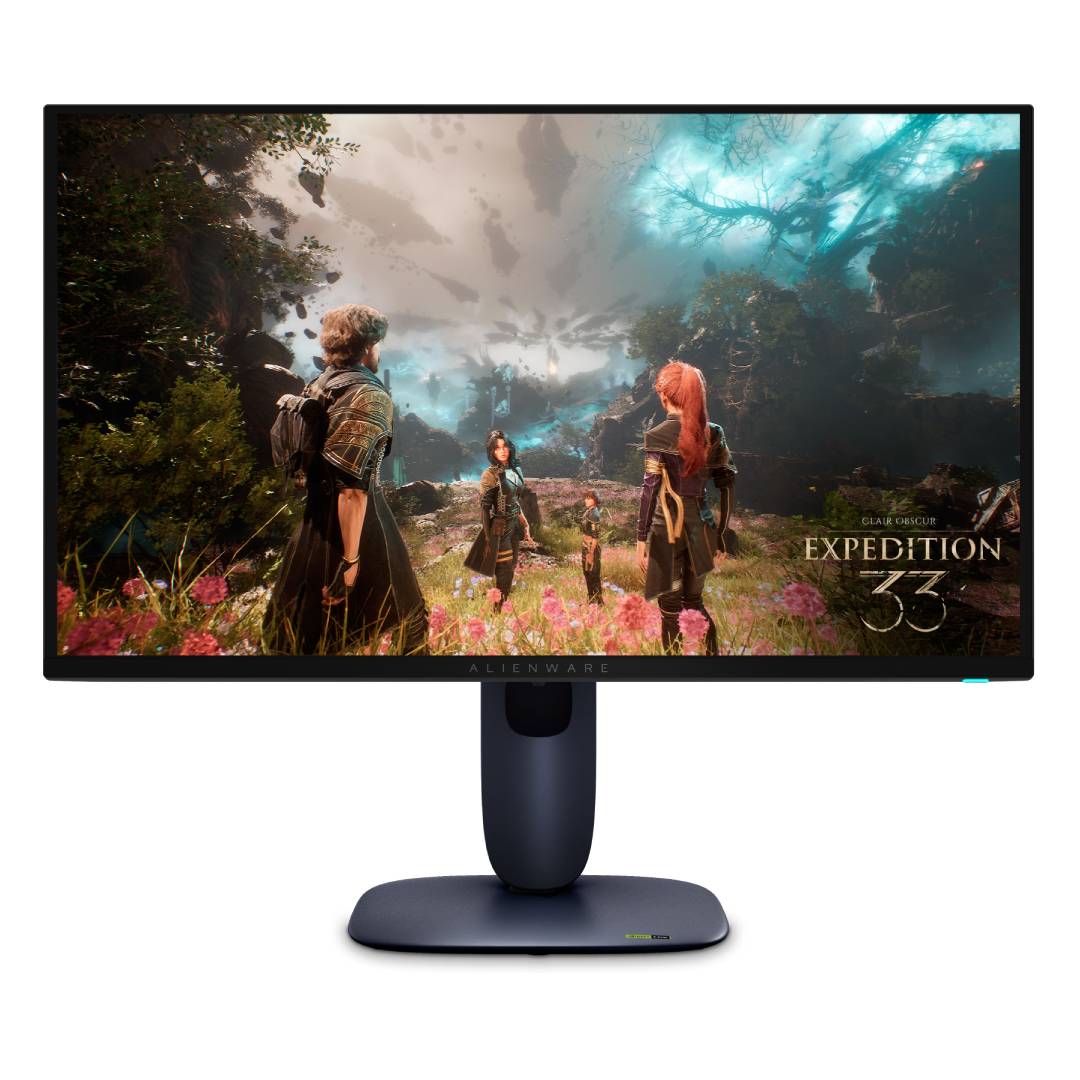
Without a doubt the top 4K display for gaming out right now, this 27-inch Alienware AW2752Q 4K OLED 240Hz display will satisfy any gamer's needs. It's pricey, and it isn't the brightest monitor around, but that impressive color accuracy and super smooth refresh rate is dreamy.
These are just a few of the top-tier gaming monitors you'll want to consider, as there are plenty more we've tested that suit different styles and spaces. Before adding to your cart, it's worth asking yourself some key questions:
How do I choose the best gaming monitor?
The criteria for picking a gaming monitor are a bit different from choosing the best monitors overall. Determining the best gaming monitor for your needs comes down to two major factors: resolution and refresh rate.
Resolution: How much resolution you need depends on how powerful your PC is. Extremely powerful machines can run games at 4K resolutions (3840 x 2160 pixels), and even have dual-resolutions (like the Alienware AW2725QF)! That means you'll probably want to pony up for a more elaborate monitor. Cheaper machines pair better with 1080p monitors, but have super high refresh rates, while those in-between can run at QHD (1440p) resolutions, and are like the best of both worlds.
Refresh rate: Refresh rate is similar in that more powerful machines will need monitors with higher refresh rates. While refresh rate and frames per second are not exactly the same thing, it's useful to think of them in the same terms when choosing a monitor. Is your PC powerful enough to get over 60 frames per second (FPS) during gameplay? 120 FPS? More? The higher the refresh rate, the higher the number of frames per second the monitor can support.
How much should I pay for my gaming monitor?
Many of the best gaming monitors are expensive, so you need to set a budget to prioritize the features you really need. As you'll find in our reviews, you can get the excellent displays that offer the right size, qualities and refresh rates that many gamers would be happy with (as we are with the Alienware AW3425DW) for less than $800. In general, smaller monitors are cheaper, and ideally, you shouldn't need to pay more than $1,000/£1,000 (in some cases) if you want the biggest and best monitor for your gaming setup.
What size gaming monitor do I need?
The smallest selection on this list is 25 inches diagonally, which means it could live comfortably on a moderately sized desk. If you opt for a 32-inch monitor, you’ll need a large desk or a small entertainment nook. You'll even find over 40-inch screens, essentially making it a TV replacement, so that's probably more suited to an entertainment setup. You'll also want to take into account ultrawide and curved monitors, as they can take up a lot of space even if they're on the smaller end.

I'm Darragh and I (luckily) get to check out a host of gaming monitors, which not only lets me find out color gamut coverage, a screen's response time, refresh rate and simply see if a game looks great on display, but it also gives me the time to play the latest titles for hours! That's how I get a good idea of the monitors worth talking about, but, of course, I couldn't do it without the rest of the monitor experts on the team.
The best gaming monitors you can buy today
Why you can trust Tom's Guide
The best overall gaming monitor
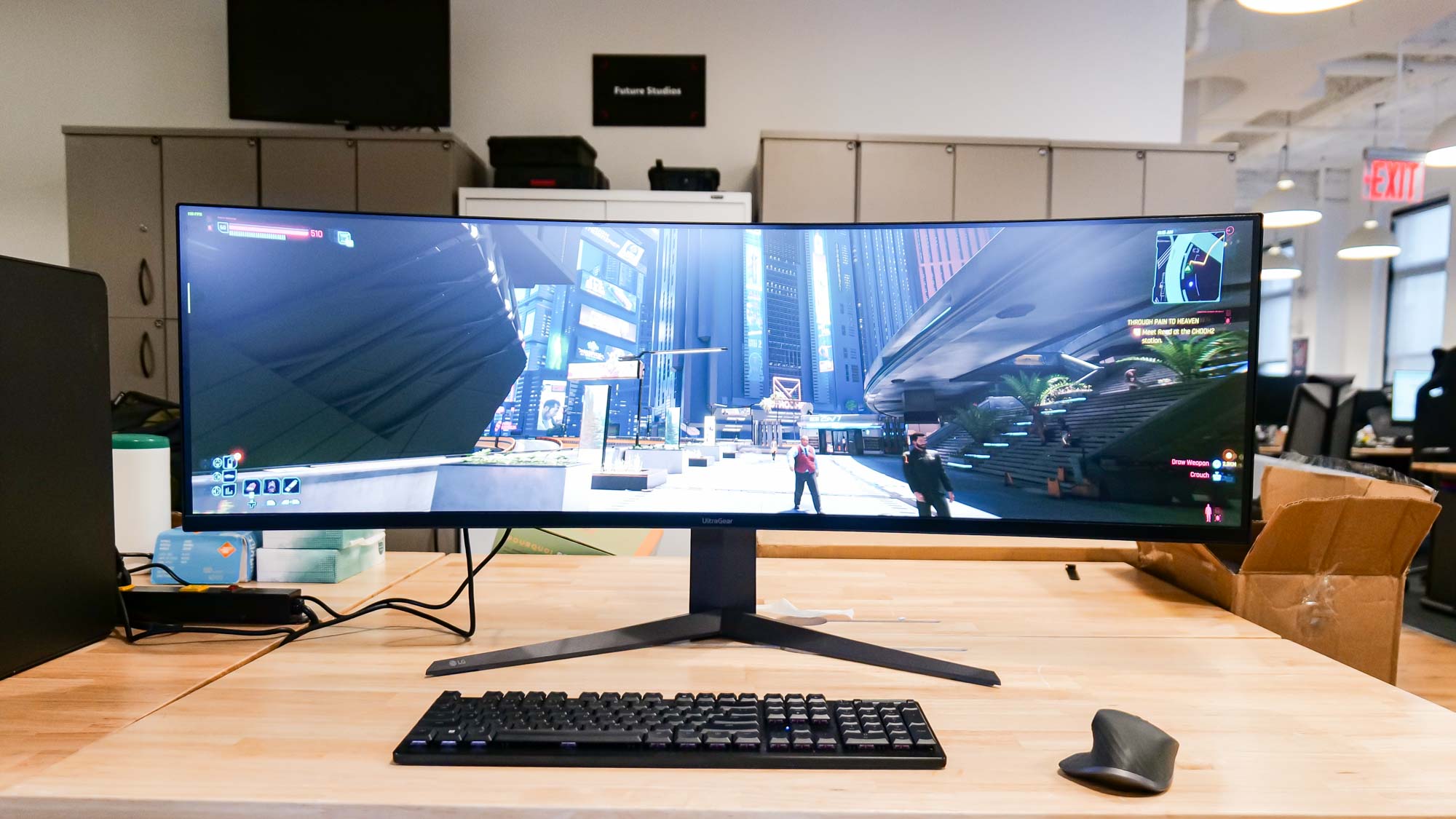
Specifications
Reasons to buy
Reasons to avoid
There might be gaming monitors on this list that boast more impressive displays and faster refresh rates, but when it comes down to pure bang for your buck, the LG Ultragear 45GR75DC is the easiest gaming monitor to recommend for most people. That’s because it’s packed with gaming-friendly features and LG have somehow managed to price this brilliant display for less than $800.
This fabulous LG monitor ticks off just about every box you could want from a modern PC gaming display, be it for work or play. The only semi-significant caveat? At 45 inches, you’re gonna need a bigger boa… sorry, desk, to accommodate this grand, gorgeous panel. With a resolution of 5,120 x 1,400 pixels, this 32:9 super ultrawide can make the best PC games look so much more immersive.
Add in that 1500R curvature and that ultra-speedy 200Hz refresh rate, and there are few other gaming monitors out there on the market that produce such quality images at almost a peerlessly aggressive price point.
Read our full LG UltraGear 45GR75C review.
The best budget gaming monitor
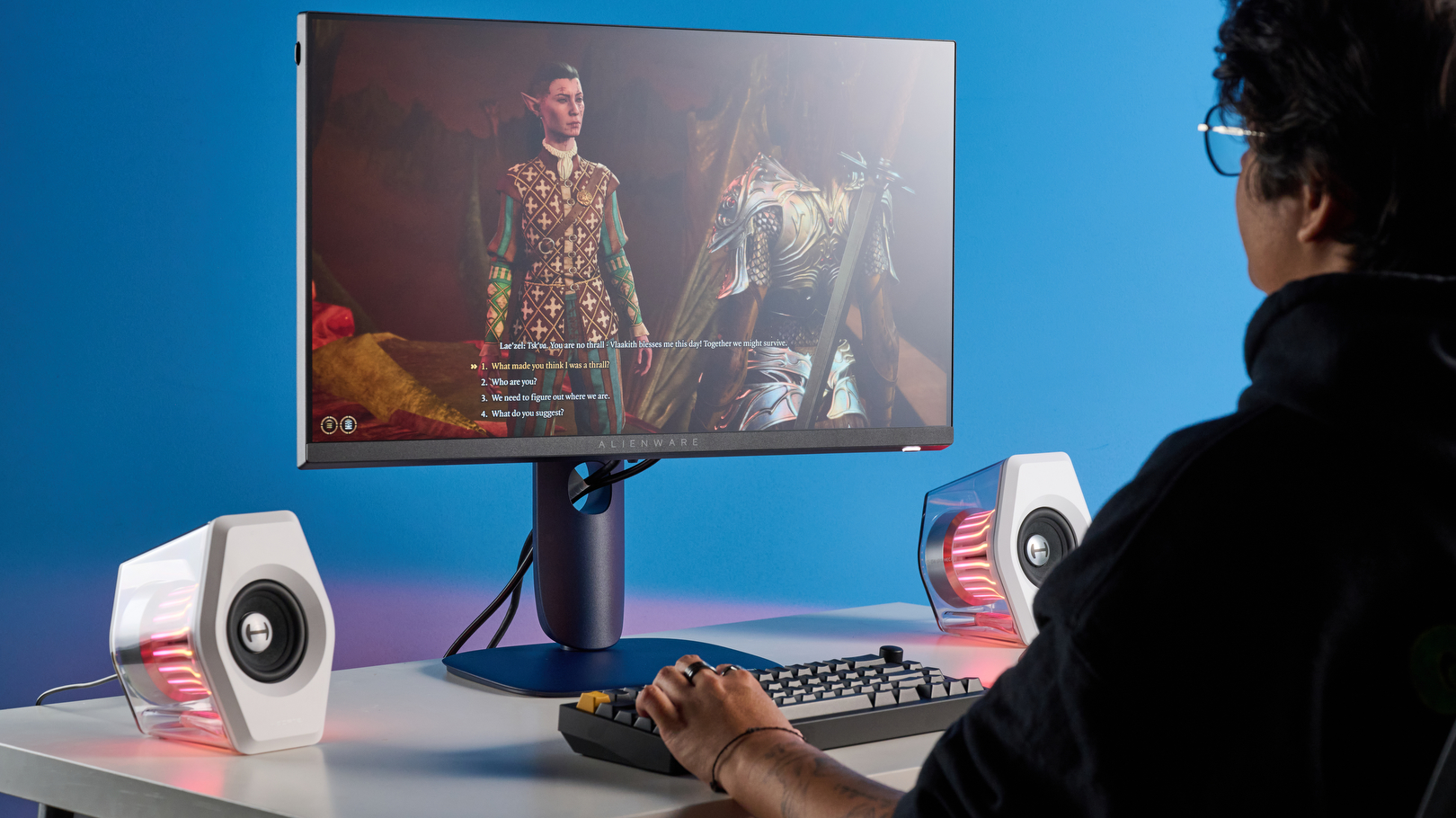
Specifications
Reasons to buy
Reasons to avoid
There's really not a whole lot to complain about when it comes to the Alienware AW2525HM, not when this ultra-sleek, 25-inch monitor with a 320Hz refresh rate is just under $250 (and even less during a sale).
Yes, a 320Hz refresh rate to buttery smooth visuals in highly competitive games, but also a 0.5ms response time, fantastic color accuracy, exceptional brightness and even HDR. All wrapped up in a compact, minimalist design that fits right on a gaming desk as well as an office setting. That's the best of both worlds.
Although it doesn't arrive with any built-in speakers, and its HDR is weak, that doesn't take away from the major perks any gamer who enjoys fast-paced multiplayer games and single-player hits will gain. It's a simple, 1080p screen, but its one of the finest ones out there for the money.
Read our full Alienware AW2525HM review
The best 4K gaming monitor
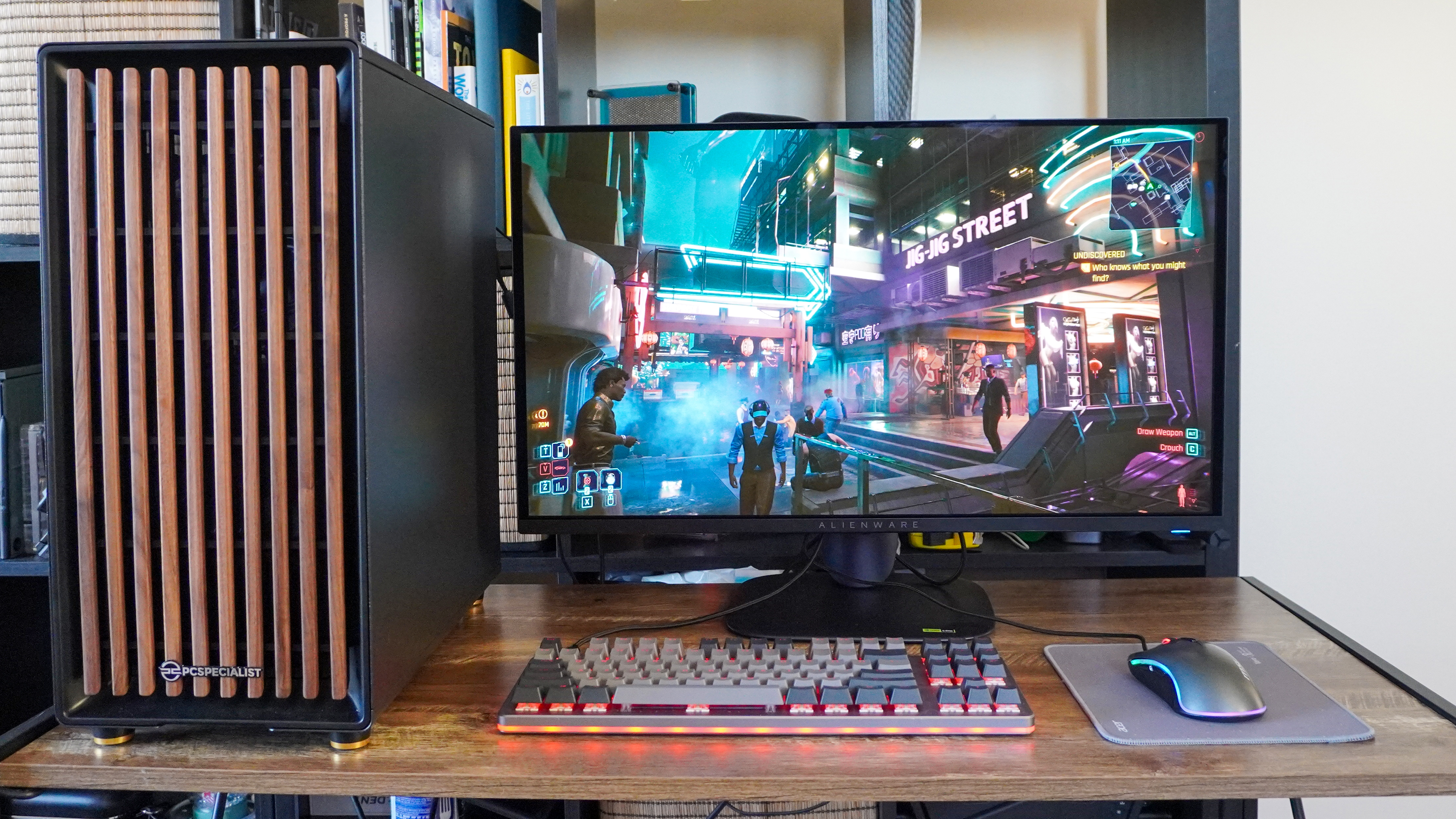
Specifications
Reasons to buy
Reasons to avoid
Put simply, if you can pay the high price for this Alienware AW2752Q 4K OLED 240Hz gaming monitor, and you can compensate for a slightly lower brightness (an occupational hazard of some OLED technology), this is easily one of the best gaming monitors you can buy right now.
The Alienware AW2752Q is a 4K monster of a screen with razor sharp fidelity and buttery smooth frame rates, which is further punctuated by gorgeous color production and immense depth from that HDR-ey contrast ratio.
If you’re a high end gamer and want to seek the best out of your shiny new GPU, this is a top pick.
Read our full Alienware AW2752Q review.
The best large-screen gaming monitor
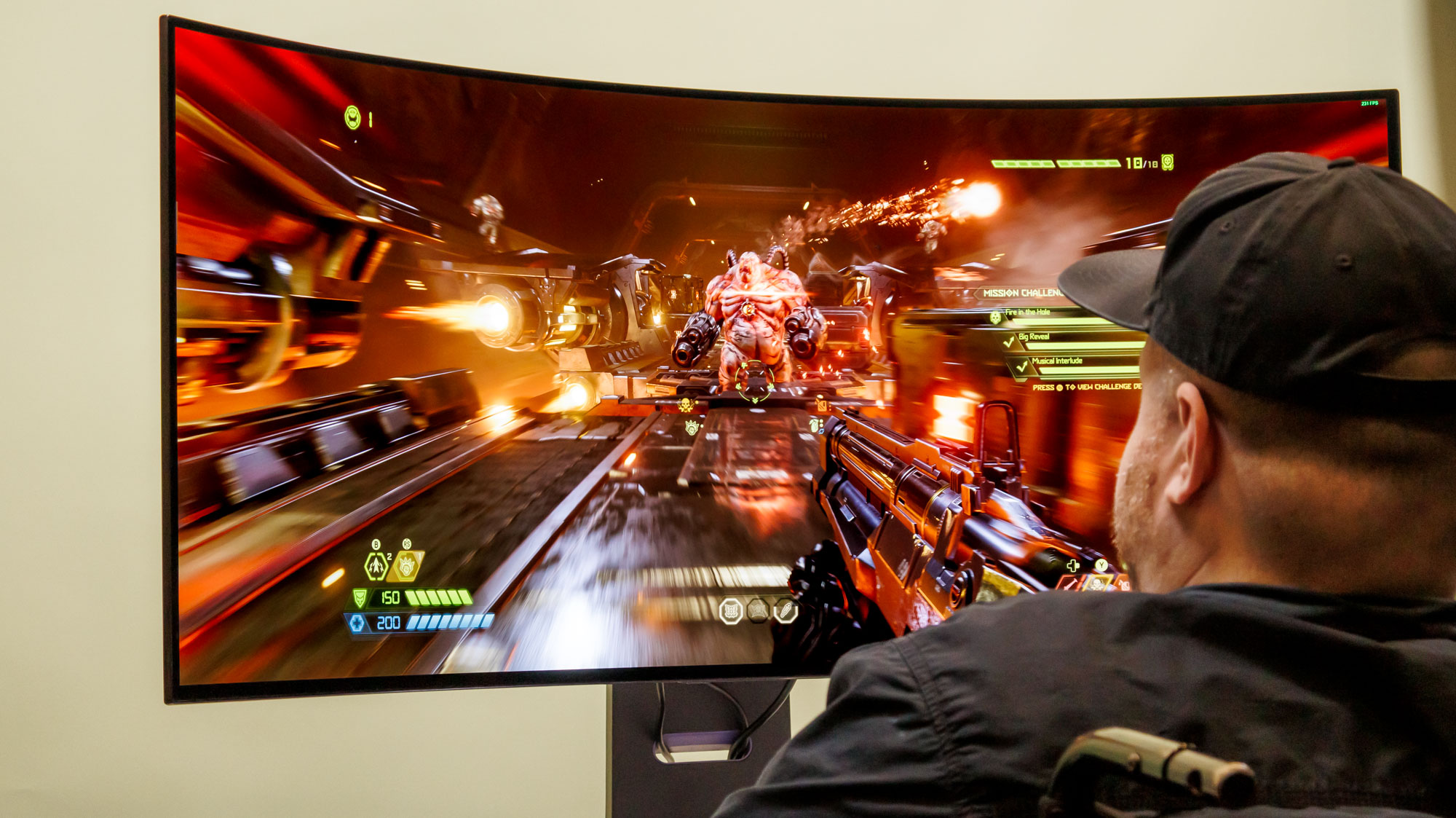
Specifications
Reasons to buy
Reasons to avoid
LG UltraGear 45GX950A-B is easily one of the most impressive gaming monitors I’ve tested. Switching between its two display modes is easy, and its 45-inch curved OLED panel excels at drawing you into the game you’re playing. The fact that said curved display is also great for work is the proverbial cherry on top.
This massive display offers phenomenal picture quality, and colors practically pop off the display, which helps to immerse you further. Yes, it's certainly pricey at $1,999, and the monitor could be brighter (but it's an OLED, after all), but it's hard to beat that 5K resolution at 165Hz and 2K resolution at 330Hz for those cinematic gaming experiences.
It's one of the finest monitors for your PS5, Xbox or PC, and if you've got the money for it (and just want a monitor that can act as a productivity machine or even a TV), it really won't disappoint.
Read our full LG UltraGear 45GX950A-B review.
The best value gaming monitor
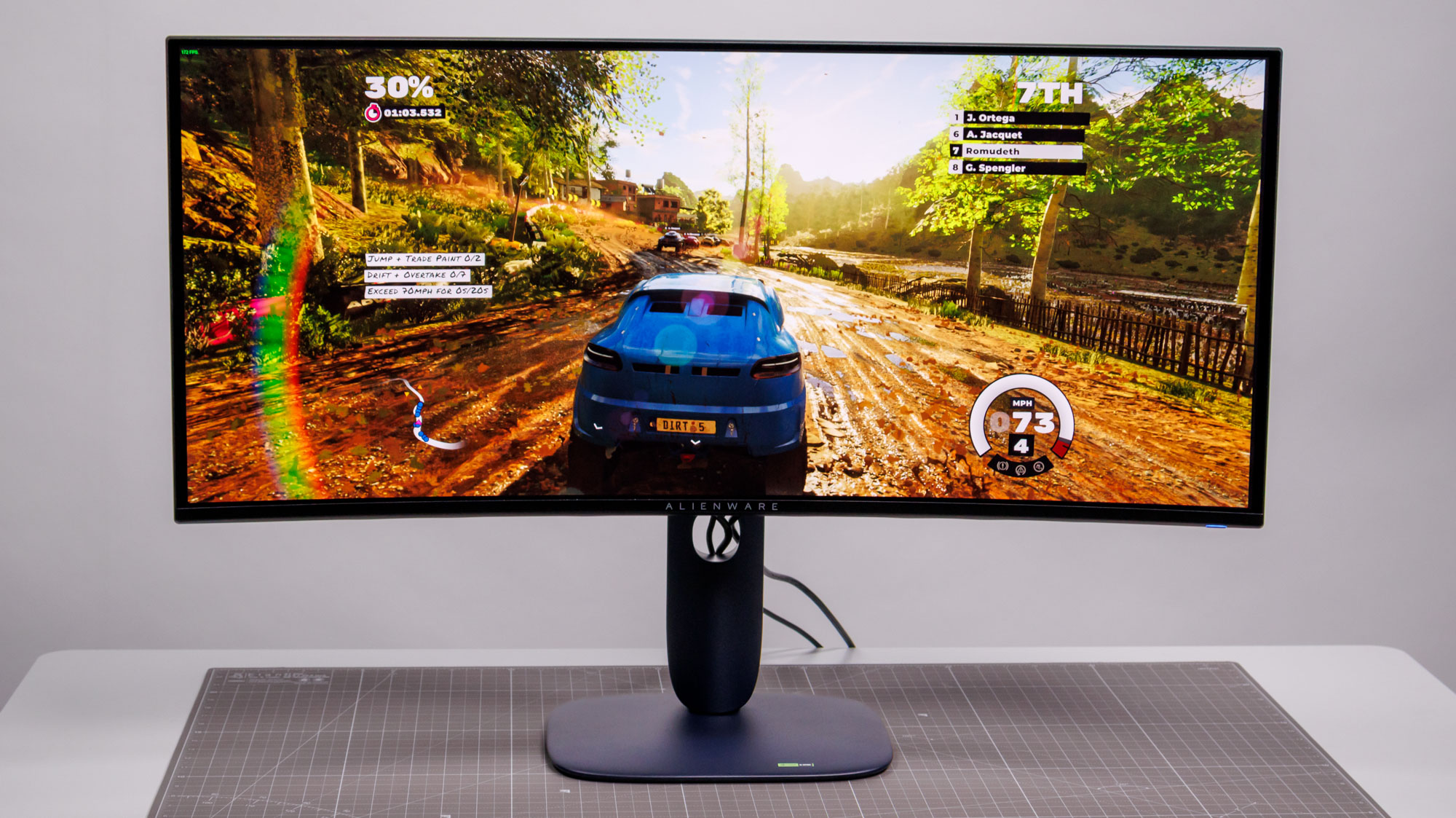
Specifications
Reasons to buy
Reasons to avoid
The Alienware AW3425DW has everything that made its predecessor great, along with several key updates. The fact that it costs $799 only makes this gaming monitor all but irresistible.
As before, you get a lovely 1800R curved panel with an ultrawide 21:9 aspect ratio. Now, the new monitor features a flat stand that occupies less space than the previous model’s triangular stand. It also looks gorgeous thanks to its “interstellar indigo” chassis.
Performance-wise, the AW3425DW can run at a smooth 240Hz refresh rate, which is a nice upgrade from its predecessors’ 165Hz. Response time is now 0.03ms, which is ideal for fast-paced first-person shooters or twitchy real-time strategy (RTS) games. Combine that with the sharp 1440p resolution and vivid colors, and you get a superlative gaming experience.
Though we wish the Alienware AW3425DW had brighter HDR, that’s about the only qualm we have with an otherwise incredible gaming monitor. For what it offers at such a relatively low cost compared to its competitors, the AW3425DW is an absolute winner.
Read our full Alienware AW3425DW QD-OLED review.
The best QD-OLED gaming monitor
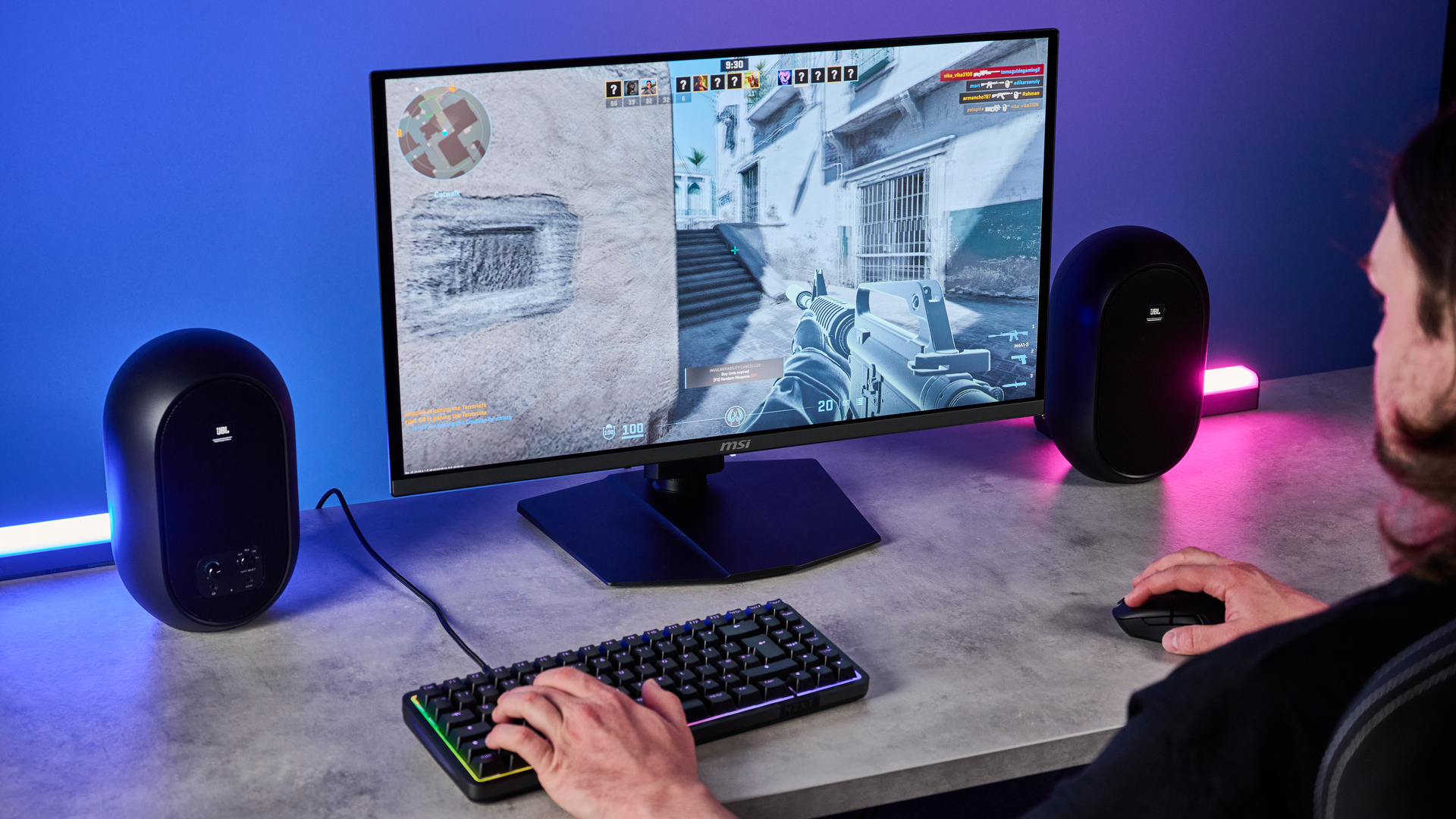
Specifications
Reasons to buy
Reasons to avoid
I mean, a 4K (3,840 x 2,160) QD-OLED display boasting a 240Hz refresh rate and a 0.03ms response time, with amazing color accuracy for gaming and productivity, too? The MSI MPG 272URX is quite the catch for any gamer looking to spend on glorious OLED.
It offers some wonders in the visual front, sporting a wide color gamut for both gaming and photo/video editing. Its 10-bit color depth means it's capable of showing 1.07 billion individual hues, too. In darker games, you can make out the finer details on enemies, while in other games, neon lights appear bright but never oversaturated — balanced enough for you to appreciate different shades and hues.
At the same time, with its wicked-fast 240Hz refresh rate and near-instant 0.03ms response time, this is one fine monitor for fast-paced gaming, whether it be for the latest FPS or racing titles.
Along with its sleek, minimalist design with lovely (but not garish) RGB lighting on the back panel, the MPG 272URX should fit right into an existing gaming or work setup. Its 27-inch screen also makes quick work of navigating massive spreadsheets or cluttered inventories in games. Pricey, but if you can grab it for under $1,000 during a sale, it's a treat.
Read our full MSI MPG 272URX QD-OLED review.
The best curved gaming monitor
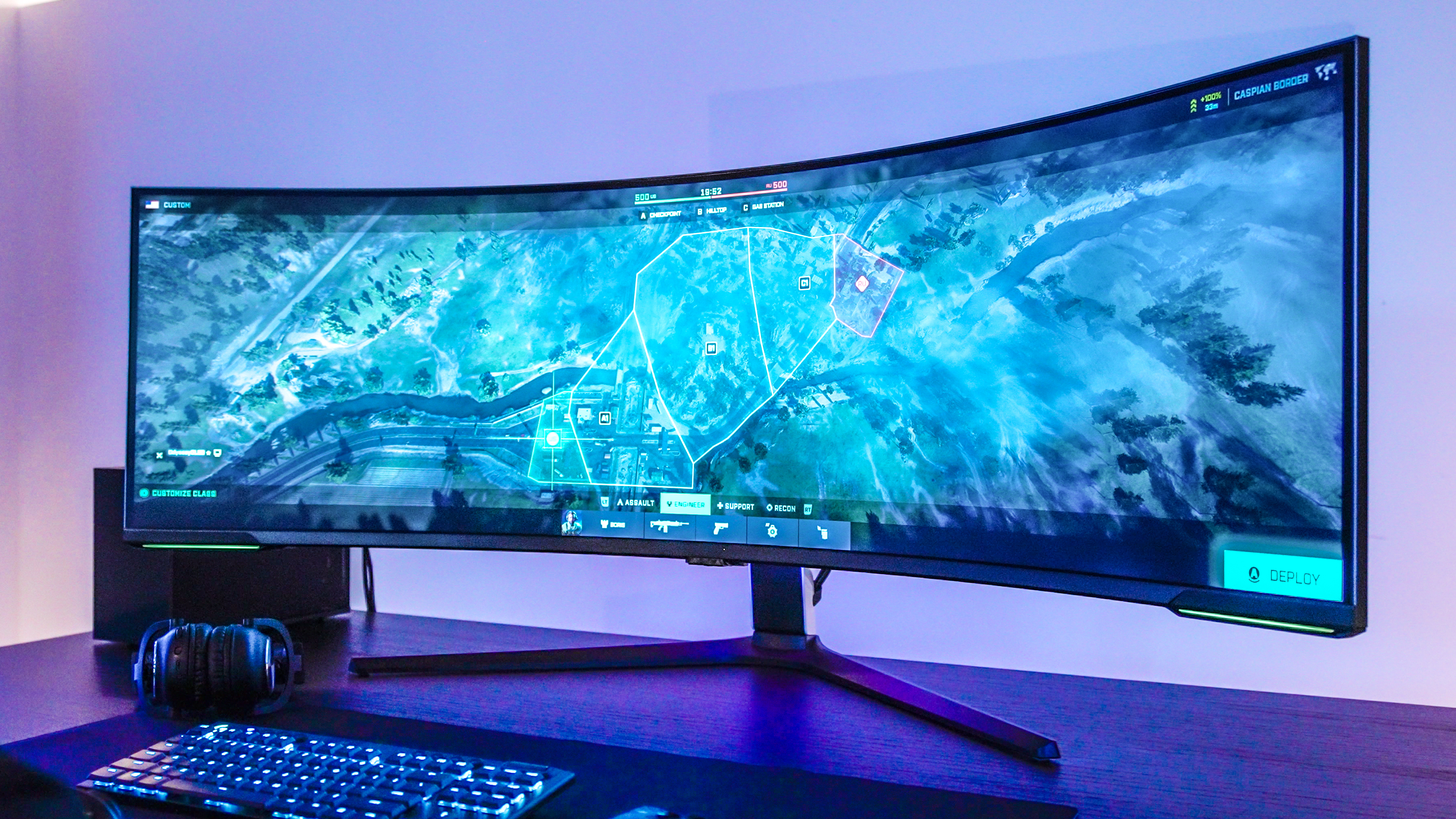
Specifications
Reasons to buy
Reasons to avoid
A 57-inch marvel, and for our money the best mini-LED gaming monitor you can currently purchase. Samsung's display makes most of the other monitors on this list look practically teeny by comparison. While its mighty form factor is the standout feature, the Neo G9 serves up quality gaming features across the board that have nothing to do with size.
The immersive 1,000R curved display 7,680 x 2,160 resolution, silky smooth 240Hz refresh rate and lightning 1ms response time provide sensational gaming sessions. If you're a multitasker, all that extra screen real estate can also help you maximize productivity.
The Samsung Odyssey Neo G9 has dropped a lot in price since it initially launched at $2,499 asking price, so the fact you can now buy it for around $1,350 makes this mammoth gaming monitor even easier to recommend.
Read our full Samsung Odyssey Neo G9 review.
The best PS5 gaming monitor
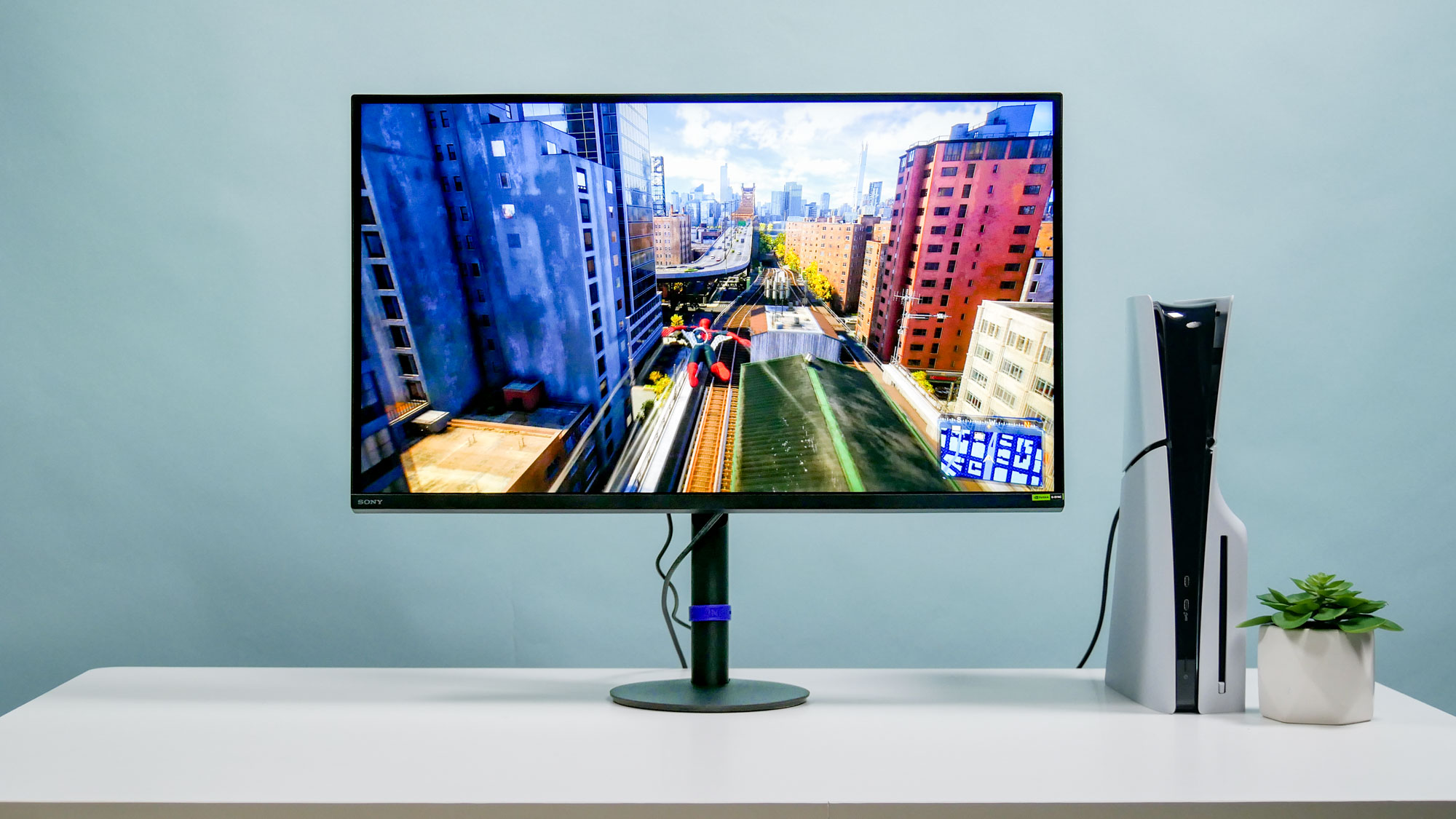
Specifications
Reasons to buy
Reasons to avoid
The Sony Inzone M9 II gaming monitor is a fantastic device for both PC and PS5 games. At $799, this striking 27-inch 4K 160Hz gaming monitor is a great buy for anyone who plays games on PC or PlayStation 5. If you happen to do both and want to do them on the same display, the M9 II is for you.
Aside from a higher refresh rate, the Inzone M9 II sports an updated design that takes up less space on a desk. Though the all-black design might not be as striking, we think it's wise that Sony ditched the tripod-style stand with a generic stand that sits above a low-profile circular base. This new design better suits all gaming setups instead of just PlayStation.
While the Inzone M9 II is undeniably great, it has some drawbacks. The main one is that there is no OLED option to complement the sharp 4K resolution. And though we appreciate the inclusion of built-in speakers, the overall quality, while better than the previous model, won't impress your ears.
Nitpicks aside, you can't go wrong with the Sony Inzone M9 II, whether you own a PS5 or a gaming rig.
Read our full Sony Inzone M9 II review.
The best ultrawide gaming monitor

Specifications
Reasons to buy
Reasons to avoid
“Truly immersive gaming.” That’s how we succinctly summed up the Samsung Odyssey OLED G9 in our review. The first-ever 49-inch OLED gaming monitor to hit the market, this is one of the most immersive displays your eyes will ever be blessed to witness. Normally retailing for a shade under $1,400, this is hands-down the best 240Hz gaming monitor out there, purely thanks to its 32:9 aspect ratio and its stunning OLED display.
The Odyssey OLED G9’s specs are pretty stunning. A Flash quick 0.03ms response time and 240Hz refresh rate make it a terrific option for fans of buttery-smooth first-person shooters like Doom Eternal. And perhaps the best aspect of this gargantuan gaming monitor. There are few OLED displays out there that prove quite so resistant to the tech’s dreaded burn-in.
See our full Samsung Odyssey OLED G9 review.
The best dual-resolution gaming monitor
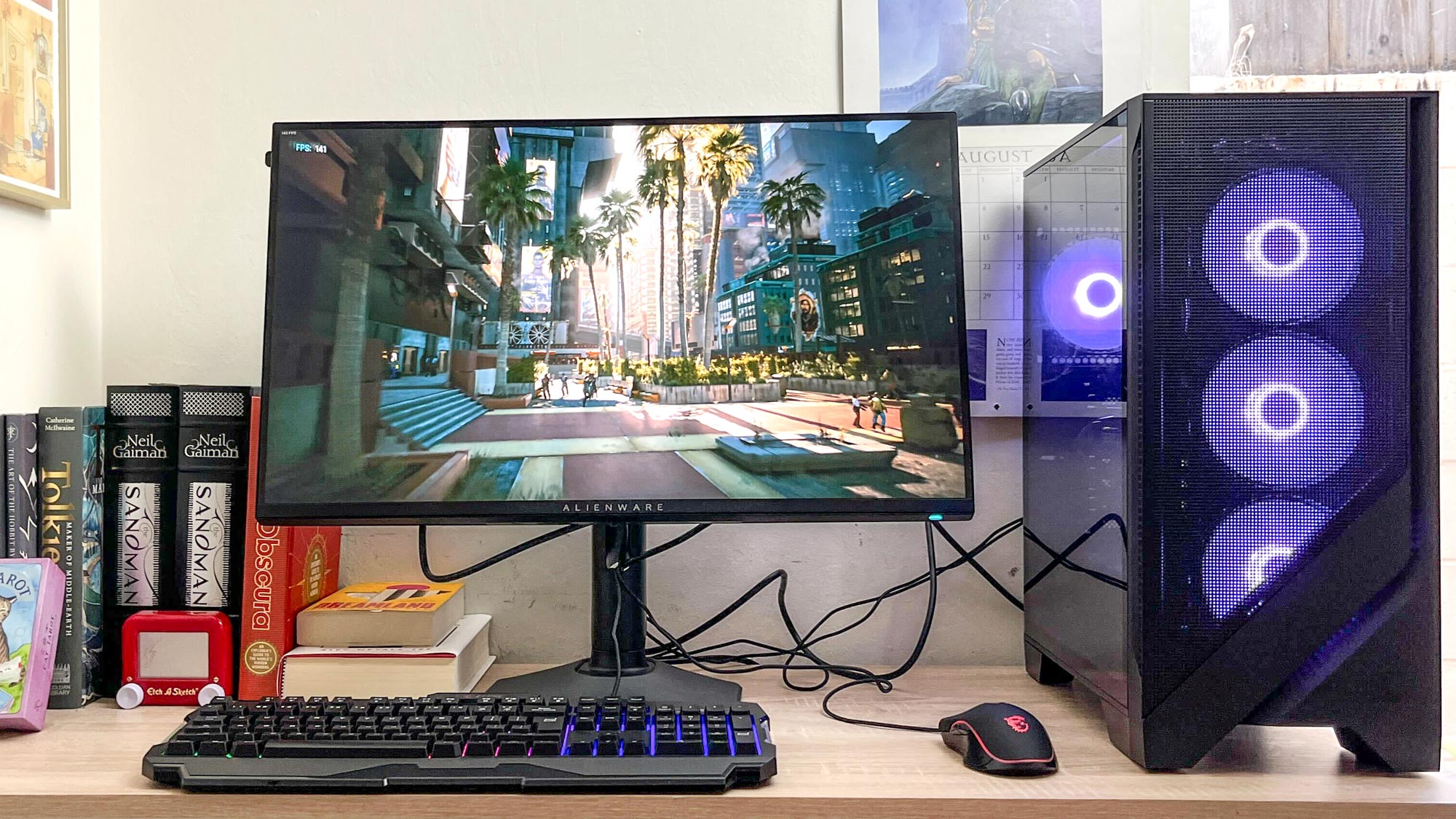

Specifications
Reasons to buy
Reasons to avoid
The Alienware 27 4K Dual Resolution Gaming Monitor is a mouthful of a name for a 27-inch display that does one very cool thing: flip between 4K 180Hz and 1080p 360Hz when you press a button.
This kind of feature isn't much use to most of us, but if you're a serious game player who wants to be able to cruise through your daily tasks in 4K and then drop down to 1080p when you really need 200-300 frames per second in a game, this is the display for you.
While it's not the first or best dual-resolution gaming monitor we've seen, this model is quite good, especially for its relatively budget-friendly $599 asking price. In my hands-on testing, I found it works well, too, with nice seamless transitions between display modes and a surprisingly bright and clear picture quality.
However, it doesn't have the lovely vivid picture quality or sharp contrasts of a mini-LED or OLED display, so you're not getting the best of the best. And frankly, if you don't think you'll need the option to switch down to 1080p resolution for faster refresh rates I think you can get a better gaming monitor for your needs for less.
But if you want a dual-resolution gaming monitor, this is the best you can buy for under $1,000.
See our full Alienware 27 4K Dual Resolution Gaming Monitor review.
Also tested
Acer Nitro KG272 E (★★★★☆)
This is but a simple, budget gaming monitor, with a price that can be found closer to just $100. That's pennies compared to all the premium displays out there, and a great price for entry-level gaming. It's only an FHD (1920 x 1080) display with a 100Hz refresh rate, but with a 1ms response time, and great visuals, it's not to be sneezed at. Unfortunately, it's hard to get your hands on, but other Acer monitors like it are available (with even higher refresh rates).
Read our full Acer Nitro KG272 E review.
Lenovo L27i-4B (★★★★☆)
While not made to be a gaming monitor, the Lenovo L27i-4B 27-inch monitor does a fine job for casual gamers. With up to 100Hz and 4ms response rates, this isn't exactly what gamers like to see, but for casual gaming, this does a good job. Plus, it's only $109 / £159.
Read our full Lenovo L27i-4B review.
How we test gaming monitors
To test our best gaming monitors, we employ a colorimeter and benchmarking software to measure a monitor's color accuracy, contrast and brightness. A monitor's brightness refers to how many nits of luminosity it can output; its color accuracy (or Delta-E) measures how lifelike its colors are; its color gamut represents how great a variety of the spectrum it can display. We can also measure a monitor's latency, and try to push it to its limits in terms of game frame rates.
Qualitatively, we run each monitor through both productivity and gaming tests. You’re not going to switch monitors each time you need to open a word processor, watch a video or send an e-mail, so every monitor on this list must be sharp and responsive for everyday use. As far as gaming goes, we run each monitor through games in a variety of genres, including FPS, RTS, MOBA, RPG and MMO, in order to ensure that it doesn’t favor one genre at another’s expense.
Get instant access to breaking news, the hottest reviews, great deals and helpful tips.

Darragh is Tom’s Guide’s Computing Editor and is fascinated by all things bizarre in tech. His work can be seen in Laptop Mag, Mashable, Android Police, Shortlist Dubai, Proton, theBit.nz, ReviewsFire and more. When he's not checking out the latest devices and all things computing, he can be found going for dreaded long runs, watching terrible shark movies and trying to find time to game
